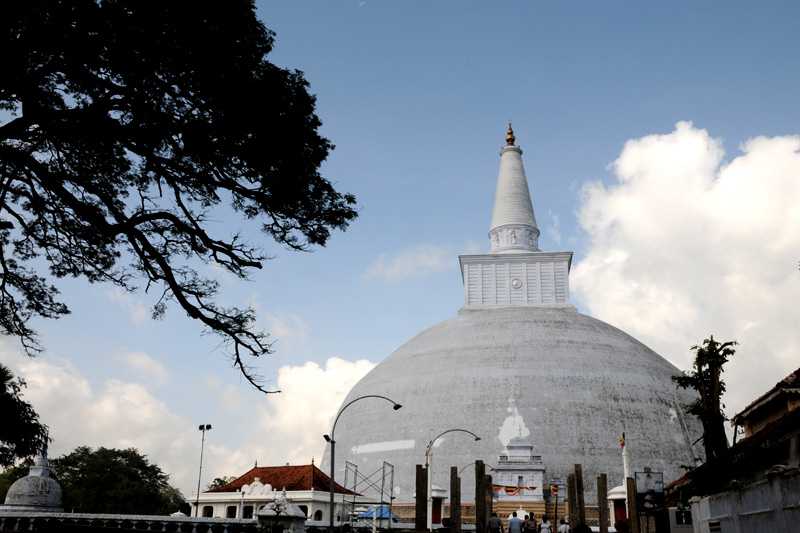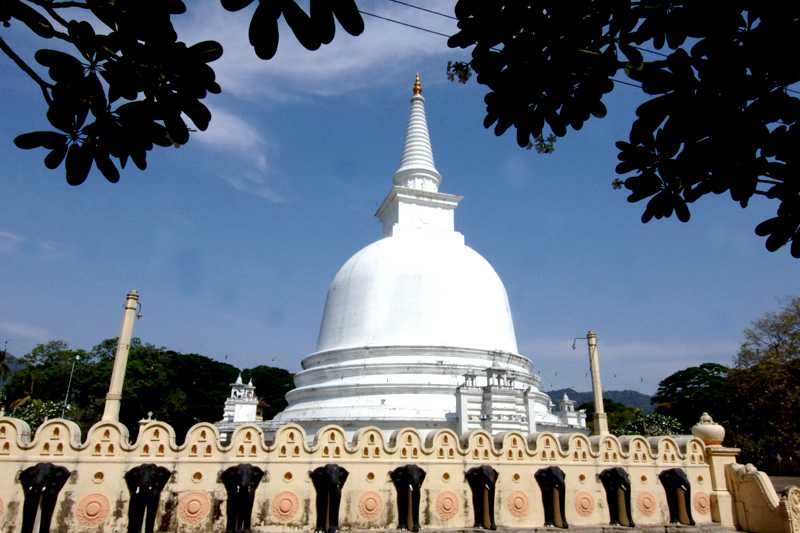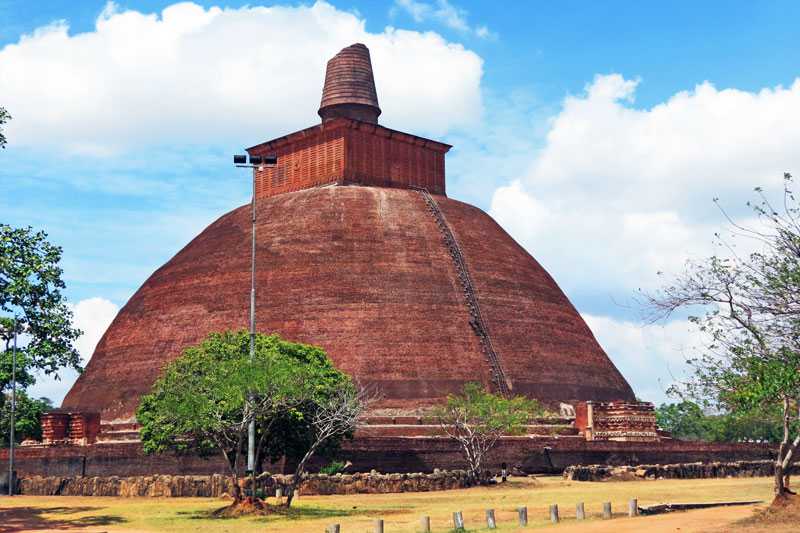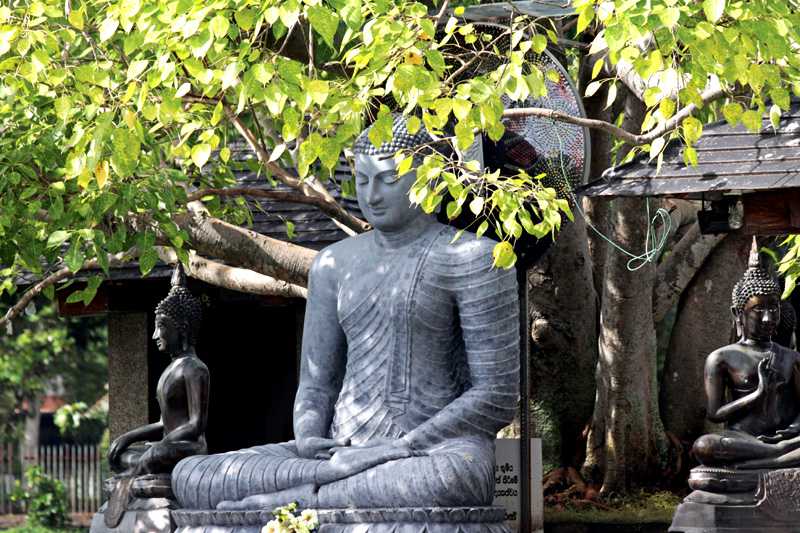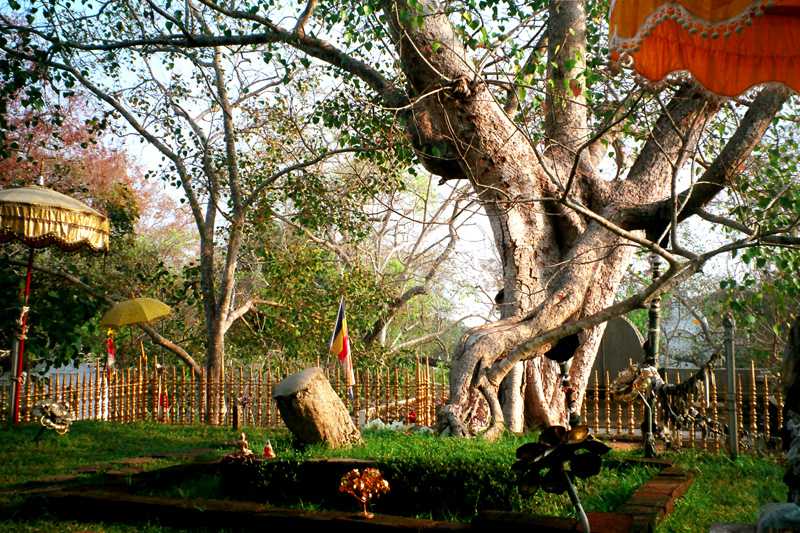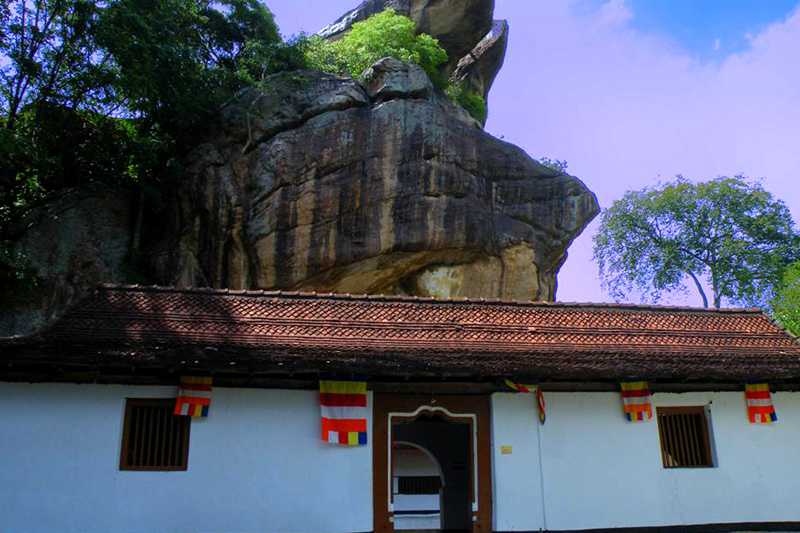Aluvihara Rock Cave Temple
This rock cave temple is the place where Buddhist monks during the King Walagamba’s rule wrote the Tripitakas in Pali on Ola leaves. The heroic reign of king Walagamba (104-77 B.C.) would go into the records of history as the Tripitakas (Buddhist scriptures) were written down on Ola leaves in Pali by a conclave of Buddhist monks of the Aluvihare Temple, lying close to Matale. These Tripitakas originally had come down by mere word of mouth by being committed to memory by Buddhist monks of the time. Such Tripitakas are classified into three divisions. They are Vinaya Pitakaya (Basket of Discipline), Sutta Pitakaya (Basket of Discourse) and Abidharma Pitakaya (Basket of Metaphysics).
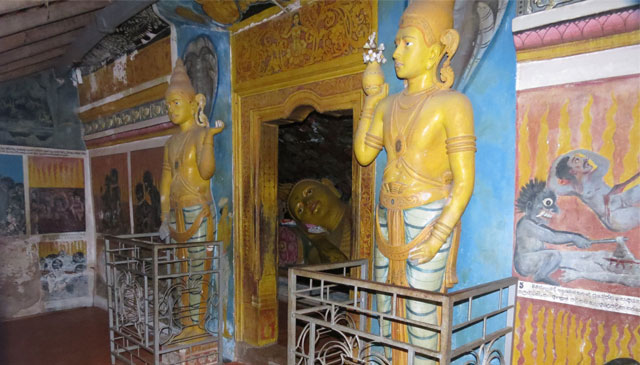
At the entrance is a solid Pandal with an arch constructed out of concrete it leads to a steep climb of stone steps leading to the Meda-midula – the frontage terrace. Then from there, rise stone steps making way to the drip ledge rock caves. There is an influx of tourists both home and abroad flocking to this historic temple. Aluvihare library contains a gallery of antiques ranging from Buddhist statues, seated, standing made out of clay, brass, marble, while some of them have been gold plated. There are also very valuable Buddha statues gifted by Siam, Cambodia, China, Japan, and Myanmar, together with other archaeological artefacts. The first cave is about 25 feet long and 10 feet high and it was one of the venues where some of these old Thripitaka were written on Ola leaves in Pali by Buddhist monks. On its apex is written in bold Sinhala letters that the Thripitaka were written during the rule of king Walagamba. It’s a rock cave shelter that harbours an Image House decorated with the typical Makara Thorana. There are also seated, standing and recumbent Buddha statues of terra-cotta, while the murals are adorned with paintings of Jathaka stories. Kandyan period paintings are covering the cave ceilings. A spiral stone staircase ends on its summit where the Sacred Bo Tree stands serenely cloistering an image house in this rock cave. The third cave is met amidst a conclave of rock boulders where is sheltered another rock cave where the Thripitaka were written on Ola leaves by the ancient Buddhist monks and a commodious residence for the present day Bhikkhus arriving from all four quarters.







